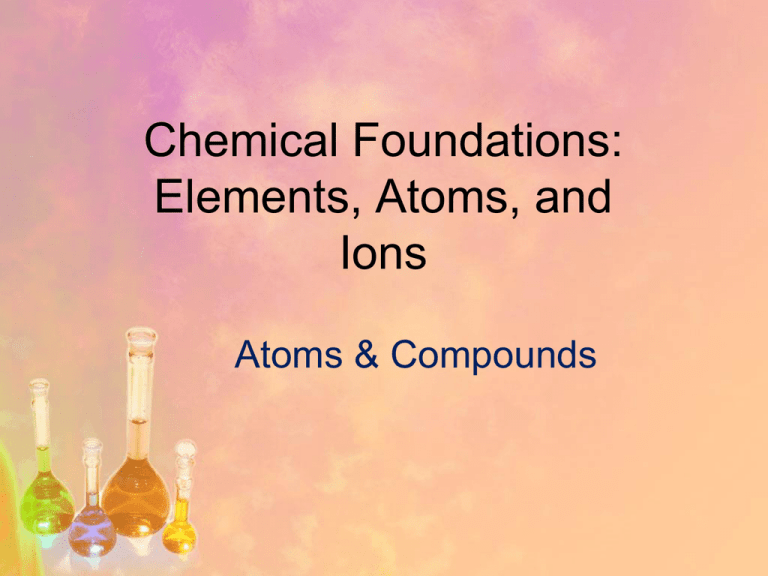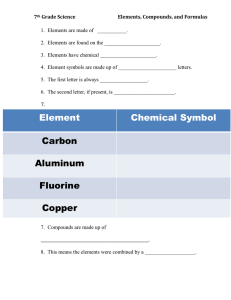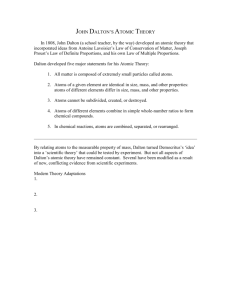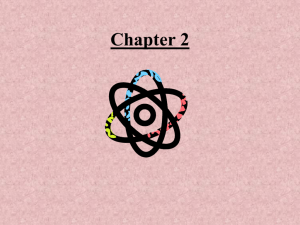Chemical Foundations: Elements, Atoms, and Ions Atoms & Compounds
advertisement

Chemical Foundations: Elements, Atoms, and Ions Atoms & Compounds Atoms and Compounds Objectives: • Students will be able to identify 4 parts of Dalton’s Atomic Theory. • Students will be able to write and interpret chemical compound formulas Atoms and Compounds Important milestones in the development of modern atomic theory: • Democritus (450 BC) • Proposed that matter was not infinitely divisible • Matter could be broken down into tiny particles he called atomos. Atoms and Compounds • Antoine Lavoisier (late 1700’s) • Proposed the Law of Conservation of Matter • Matter is not created or destroyed during chemical reactions • Joseph Proust (1799) • Proposed the Law of constant composition • A given compound always contains the same elements in the same proportions by mass • For example: the mass of water (H2O) always contains exactly 88.9% oxygen and 11.1% hydrogen. Dalton’s Atomic Theory • John Dalton – (early 1800’s) proposed the atomic theory of matter Mass of oxygen that combines with 1 gram of Carbon Compound 1 1.33 g Compound 2 2.66 g This can be explained in terms of atoms. Compound 1: CO (Carbon monoxide) Compound 2: CO2 (Carbon dioxide) Dalton’s Atomic Theory Law of Multiple Proportions If 2 or more elements form a series of compounds, the ratios of the masses of elements can be reduced to small whole #’s Dalton’s Atomic Theory Dalton’s Atomic Theory (early 1800’s) • Elements are made up of tiny particles called atoms. • Atoms of a given element are identical. Atoms of different elements are different in some fundamental way. • Chemical compounds from when different elements combine. A given compound always contains the same elements in the same proportions. • Chemical reactions involve reorganization of atoms. Atoms are not created or destroyed in chemical reactions. Formulas of Compounds Compound- combination of two or more elements in a fixed proportion. H2 O Subscript of one is not included. # of H atoms Element Symbols



